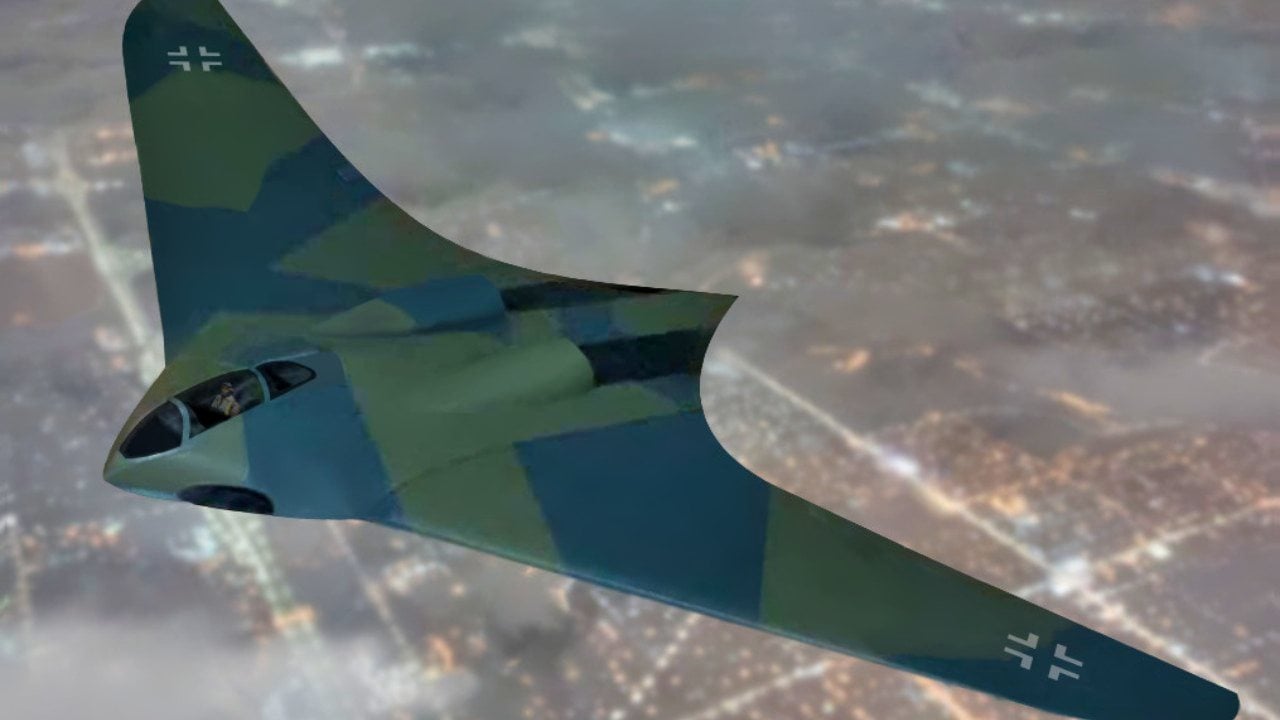Horten Ho 229: Did Hitler Really Build a Stealth Fighter?
The Horten Ho 229 was a German prototype fighter-bomber developed during World War II, often considered the world's first stealth fighter due to its flying wing design, which reduced radar detection.
What You Need to Know: The Horten Ho 229 was a German prototype fighter-bomber developed during World War II, often considered the world's first stealth fighter due to its flying wing design, which reduced radar detection.

- Designed by brothers Walter and Reimar Horten and built by Gothaer Waggonfabrik, it was the first flying wing powered by jet engines. The Ho 229 featured two turbojet engines, a top speed of 977 km/h (607 mph), and was armed with two 30mm cannons.
-Only three prototypes were built, and the program ended after a fatal crash in 1945. One surviving example is displayed at the Smithsonian's Udvar-Hazy Center in Virginia.
Horten Ho 229 - The Actual World's First Stealth Fighter?
To railroad modeling hobbyists, the term “HO” signifies the most popular scale of model railway in the world. However, in the context of military aviation history, “HO” has a much different meaning. Say Guten Tag to the Horten Ho 229, AKA the H.IX or Gotha Go 229 prototype fighter-bomber.
Had it gone operational, the Ho 229 would’ve joined the ranks of Nazi Germany’s so-called Wunderwaffen (Wonder Weapons) of the Second World War, along with: the Luftwaffe’s Messerschmitt Me 262 Schwalbe (Swallow), the world’s first operational jet fighter; the Messerschmitt Me 163 Komet (Comet), the world’s first operational rocket-powered fighter plane; and the Arado Ar 234 Blitz (Lightning), the world’s first operational jet bomber. Some would assert that the Ho 229, and not the Lockheed F-117 Nighthawk, was the world’s first stealth fighter, this claim is highly debatable and must be taken with a grain of salt.
Ho 229 Initial History & Specifications
Designed by the Horten brothers, Walter and Reimar, and manufactured by Gothaer Waggonfabrik (GWF), the Ho 229 made her maiden flight, in glider form, on March 1, 1944; the first actual jet-powered version flew on February 2, 1945. She was the first flying wing aircraft to be powered by jet engines.

The warbird, more specifically the H0 229A variant, had the following specifications and vital stats:
Fuselage Length: 7.47 meters (24.5 feet)
Wingspan: 16.76 meters (fifty-five feet)
Height: 2.81 meters (nine feet and three inches)
Max Takeoff Weight: 8,100 kg (17,900 lb)
Powerplant: two Junkers Jumo 004B turbojet engine, 8.83 kN (1,990 lbs) thrust each
Max Airspeed: 977 km/h (607 mph; 528 kn)
Combat range: 1,900 km (1,200 mi, 1,000 mi)
Armament: 2x 30 mm (1.181 in) MK 108 cannon
The guns stand out as sharp contrast to the F-117 so-called “Stealth Fighter” and the flying wing-style Northrop B-2 Spirit “Stealth Bomber” insofar as the latter two carry no air-to-air ordnance.
In addition, as noted by my colleague Sebastien Roblin, the warbird even featured a primitive ejection seat and a drogue chute deployable while landing.
A total of three airframes were built.
Operational History
So then, besides its passing resemblance to the B-2 Spirit, why do some armchair historians consider the Ho 229 to be the first stealth fighter? Well, As BBC Future correspondent Stephen Dowling explains, “[A] design which ditches the traditional tail fin at the back. This design helps reduce the aircraft’s size, and creates a smoother shape – one less likely to bounce back radar signals being sent out to detect it.”
Okay, so what went wrong with the Ho 229?
“Well, simply put, the only actual powered example, as opposed to the glider version mentioned in the preceding section, the X.IX V2, crashed on its third flight on February 18, 1945, killing its test pilot, Lieutenant Erwin Ziller. Some foreshadowing might’ve been evident in the plane’s second flight, wherein a crash landing also took place, requiring extensive repairs…Nearly 100 production aircraft had been ordered, but the fatal crash abruptly rendered that business transaction kaput.”
Where Are They Now?
If you either live “inside the Beltway” i.e. the Washington, DC area or are planning on visiting the Nation’s Capital as a tourist anytime soon, you’re in luck; one of three Ho 229s has been preserved for historical posterity and is on display at the Smithsonian National Air & Space Museum’s Steven F. Udvar-Hazy Center in Chantilly, Virginia.
It’s stone’s throw from Washington Dulles International Airport and a tour I can personally vouch for from multiple visits.
About the Author
Christian D. Orr is a Senior Defense Editor for National Security Journal (NSJ). He is a former Air Force Security Forces officer, Federal law enforcement officer, and private military contractor (with assignments worked in Iraq, the United Arab Emirates, Kosovo, Japan, Germany, and the Pentagon). Chris holds a B.A. in International Relations from the University of Southern California (USC) and an M.A. in Intelligence Studies (concentration in Terrorism Studies) from American Military University (AMU). He has also been published in The Daily Torch , The Journal of Intelligence and Cyber Security, and Simple Flying. Last but not least, he is a Companion of the Order of the Naval Order of the United States (NOUS).
Image Credit: Creative Commons and/or Shutterstock.


